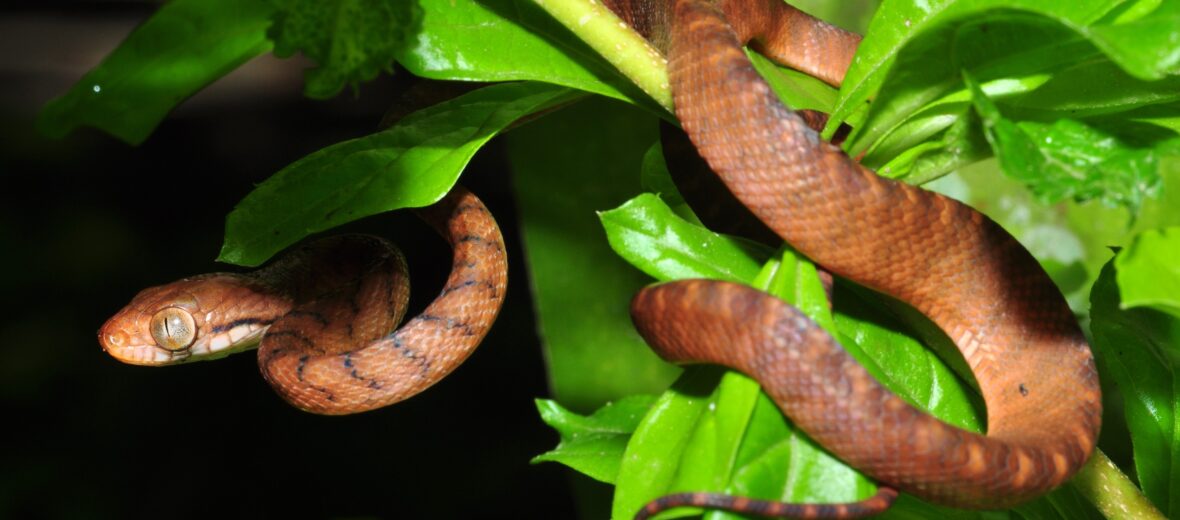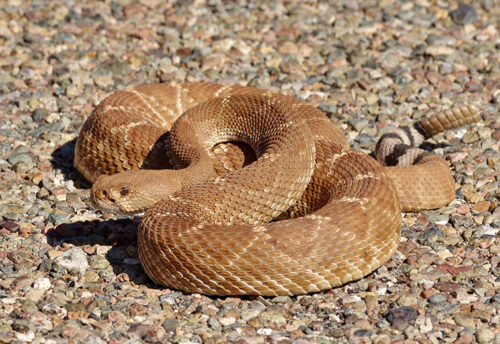
The brown tree snake is an arboreal (lives in trees), rear-fanged colubrid snake native to eastern and northern coastal Australia, eastern Indonesia (Sulawesi to Papua), Papua New Guinea, and a large number of islands in northwestern Melanesia. This snake is quite infamous for being a highly invasive snake species responsible for rooting out and destroying, almost completely, the majority of the native bird population in Guam. It is also one of the very few colubrids found in Australia, where elapids are much more common. It is also one of the few known venomous colubrids.
First the Stats…
Scientific name: Boiga irregularis
Weight: Up to 5 lbs.
Length: Up to 10 feet
Lifespan: Up to 15 years
Now on to the Facts!
1.) This snake is nocturnal (active at night).
2.) The brown snake preys on lizards, bats, birds, and rats, as well as other small rodents in its native range. It preys, almost exclusively, on birds and shrews in Guam.
3.) Brown tree snakes seem to have gotten to Guam via a suspected military shipment and from there began to run rampant.
4.) There are an estimated 2 million of these snakes living on Guam now and are devastating the local fauna as an invasive species does!
5.) The brown tree snakes are arboreal (spend most if not all of their lives in trees).
But wait, there’s more on the brown tree snake!
6.) Typically the female only produces a clutch about twice a year. But on Guam, they produce all year long!
7.) The female produces 4 – 12 leathery oblong eggs. She deposits the eggs in rock crevices, hollow logs, & other sites where they’re more likely to be protected from drying out and from high temperatures.
Did you know…?
The venom is a weak neurotoxin (affects the nervous system) and a cytotoxic (damages cells) with localized effects that don’t have much affect on adults but can have serious medical consequences to children.
8.) When threatened this critter is highly defensive and tends to lunge and strike at their aggressor repeatedly!
9.) A study was performed to determine if the introduction of predators to Guam could help alleviate the invasive tree snake. 2 possible solutions are the introduction of the cane toad and the red-bellied black snake. But there is hesitation in doing this due to the obvious outcomes of other animals being affected too; especially by the highly invasive cane toad.
Now a Short Brown Tree Snake Video!
Also, check out the Critter Science YouTube channel. Videos added frequently!
Want to suggest a critter for me to write about? Let me know here.



